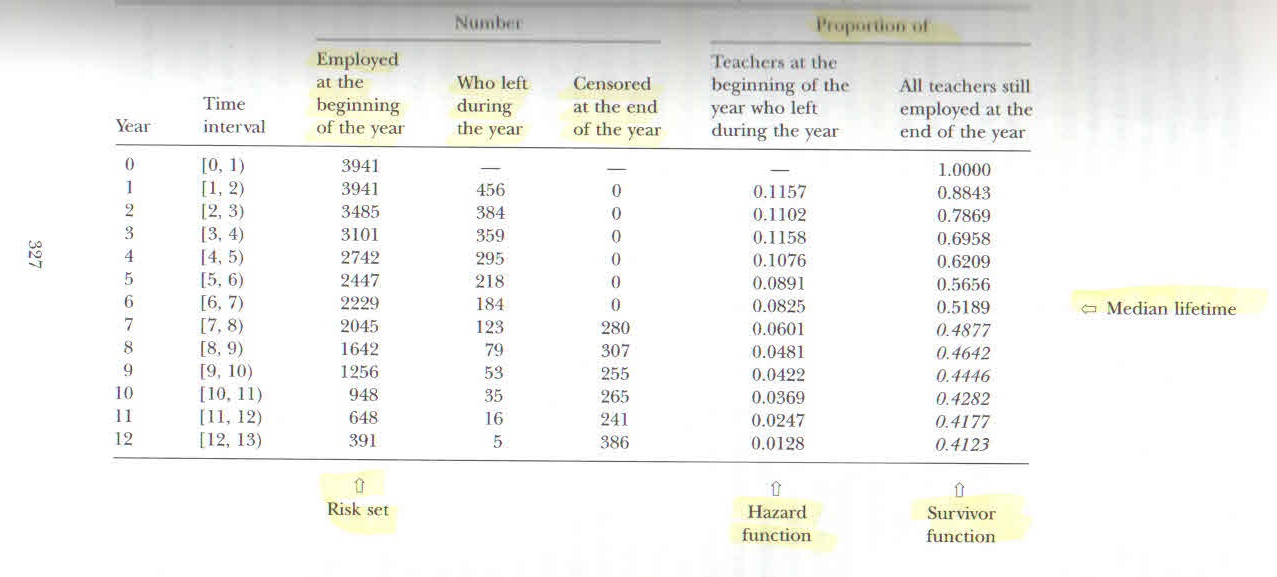This question is related to a few others (Here,Here) on the topic as I have been searching for information. Hopefully this one is sufficient.
1) I am seeing differences in the relationship between survival at time t, S(t) and the hazard at time t, h(t).
In Singer and Willet page 337 (10.5) they define the estimated survival $\hat{S}(t_{j})$ = $[1-\hat{h}(t_{j})][1-\hat{h}(t_{j-1})][1-\hat{h}(t_{j-2})]....[1-\hat{h}(t_{1})]$. They also define a life table as such:

In other sources Will Potts and others, they define $\hat{S}(t)$=$\prod_{t_{j}< t}(1-h(t_{j}))$ implying that the value of the hazard at time t is not included in the calculation for Survival at time t.
Which is correct? Is the difference in how the life table is set up?
2) How would you calculate the mean time time (restricted since there is censoring at the end of the collection period). Would you sum all $\hat{S}(t)$ (including the 1 at time zero) to arrive at 7.7? You always her it is the "area under the survival curve".
3) How would you calculate the residual mean lifetime for those that survived to the end of, say year 4? Is it summing all $\hat{S}(t)$ from 0.6209 through 0.41123 divided by 0.6209
Using the fact that the formula for the mean residual survival time mrl(u) = E(T -u | T>u) is given by $\frac{1}{S(u)}\int_u^{\infty} S(t)\, dt$ and our "u" is 4 here (since we are saying T>4 in the conditional expectation)?
